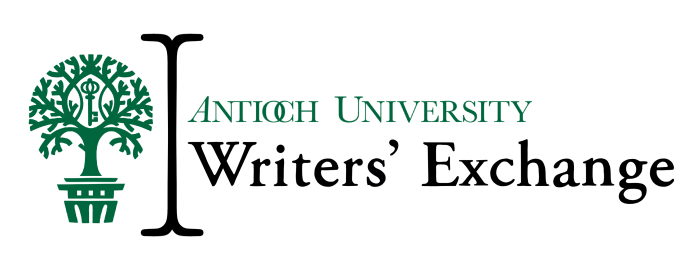The Annotated Bibliography is a standard academic writing exercise that stimulates critical thinking through researching, analyzing, and evaluating those resources to compose effective annotations. The Annotated Bibliography reflects the researcher’s understanding and evaluation of sources, and thus it is an excellent vehicle for increasing expertise in a topic.
Annotated bibliographies are wonderful resources for other researchers as well. For example, before researching on a “large topic,” you might explore availability for annotated bibliographies written by faculty experts in that field. For example, a quick Google Scholar search finds multiple annotations written on the topic of land management and sustainability. Try a Google Scholar search with your own topic.
An Annotated Bibliography is regarded as an academic piece of writing that reflects the writer’s keen research and insights; however, the first person is typically avoided in the annotation. An annotation is more than a description of the text or research. It provides necessary information and comments regarding the value of a particular resource for an audience of other experts in the field. Commentary about the scope, purpose, and validity of the research become the focus of your annotation.
The Annotated Bibliography is comprised of brief summaries and analysis of featured research. You might consider that the audience of your annotated bibliography includes not only your instructor, but also other researchers in the field. Thus, the first impression for your reader is the reference list: are the experts represented here? Are the resources current and reflecting an appropriate range of thought? Overall, the list should reflect the caliber and extent of your research, impressing the reader of your own qualifications and effectiveness as a researcher. Then the reader will review the actual annotations and how well you analyze and present each resource.
Writing the Annotation
In writing the annotations, focus on conveying to your interested reader the aspects, value, and use of the resource. Relate the author and text to other research in the field. Examine the approaches to research and the claims made by the authors. Consider that the annotation is a critique of the research, text, etc, by using rhetorical strategies of analyzing and evaluating as you compose the annotations; they are more than summaries.
The annotated bibliography is composed of a reference list complying with the style sheet of your discipline (APA, MLA, Chicago, etc.). Immediately following each entry is a paragraph length (around 5 sentences) including sentences with rhetorical purposes of summary, evaluation, and analysis of the research.
In analyzing texts (articles, books, and other materials), avoid weak adjectives (excellent, good, well done). Describe the extent of the research and how the authors concluded their findings. Above all, evaluate the source in reference to your research problem while bearing your audience in mind.
Summarizing the Text
- Locate main idea and supporting points.
- Put these in your own words.
- Resist the temptation to quote or paraphrase from the original (then, you’d have to cite).
- Be objective here: the purpose of the summary is to relate the author’s work for another reader.
- Identify how ideas relate.
- Define the methodology of the study.
- Identify the author and his/her contributions/credentials in the field.
Analyzing the Text
- What is the major claim/thesis of the text?
- What influences this claim? How does the author substantiate the thesis?
- What are the operative terms?
- What does the author assume about the subject? How do you know this?
- How does the author establish credibility?
Evaluating Data/Text/Author
- How extensive is the research? Are the data substantiated?
- Are there visuals/graphs, etc. to support the claims and/or reading?
- Does the author use footnotes to develop other themes?
- What elements are missing or what questions of the research do you have?
- What does the research contribute to the field?
Acknowledging the Author
When annotating a text, don’t neglect to identify the author(s) in more substantive ways. You usually can find information about the author in the text itself. Look at the first or last page for biographical information. Typically, in academic/scholarly journals, there’s a brief bio of the author on the bottom of the first page, near the abstract, or at the final page. Also, a quick Google Scholar search can usually identify areas of research and other writing of the author.
Including this variety of information serves the purpose of qualifying the researcher. Here, you might consider using the appositive, a quick descriptive phrase (for example, Burns, a professor of linguistics at Baylor University, describes…). Additionally, don’t neglect to examine the references page of the article where you can identify that the author has written extensively on a subject simply by seeing the list of other related articles. Above all, don’t neglect the detail that is embedded in the text—the researcher/writer’s identity is essential to the credibility of the research.
Format Requirements
You’ll want to confirm with your individual faculty member with each Annotated Bibliography you develop. For many, the following elements are expected:
- Identify your “Research topic” and put at the top center of the page with “Annotated Bibliography” listed immediately in the line below.
- Some faculty will ask that you include your research questions as well.
- Use the documentation format of your discourse community for bibliographic entries.
- Annotations are typically at least 1 paragraph (5 sentences).
Steps
1. Decide on research topic, problem, and questions that will motivate research.
2. Conduct a literature search:
- Identify reference books, i.e. guides, handbooks, and dictionaries;
- Find abstracts, indexes in your field;
- Develop definitions and synonyms for use when researching.
3. Find sources:
- Maintain a working bibliography of sources;
- Identify “experts” of the field;
- Understand the varied thinking on the topic.
4. Read, summarize, and analyze sources:
- Select easier articles first.
- Scan the article: Identify the research question, hypotheses, findings, and interpretation of findings. Keeping notes here will help with annotations.
- Write a quick, working summary of the article.
- Read for depth and understanding, keeping notes of key points.
5. Compose annotations from notes:
- Intentionally compose a summary sentence, an analysis sentence, and an evaluative statement;
- Then, consider integrating them;
- While doing so, remember that your reader expects a certain format and schema of the annotation.
6. Organize sources and respective annotations alphabetically and/or by subtopic if it’s an extended bibliography.
7. Proofread and edit.
Developed by Anne Maxham, Ph.D. for The Writers’ Exchange






